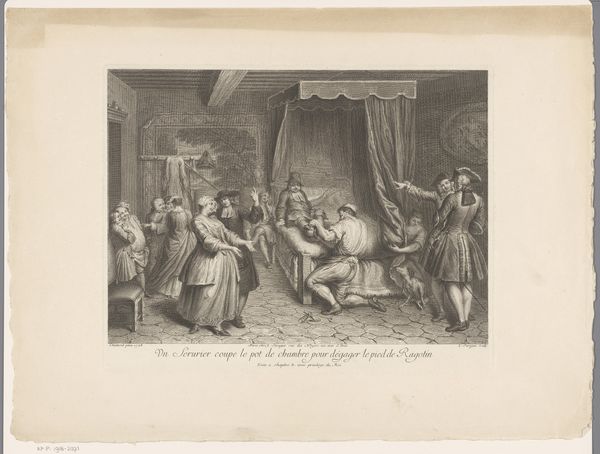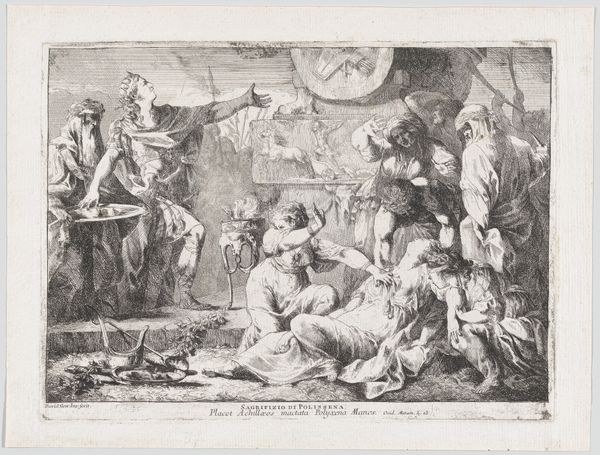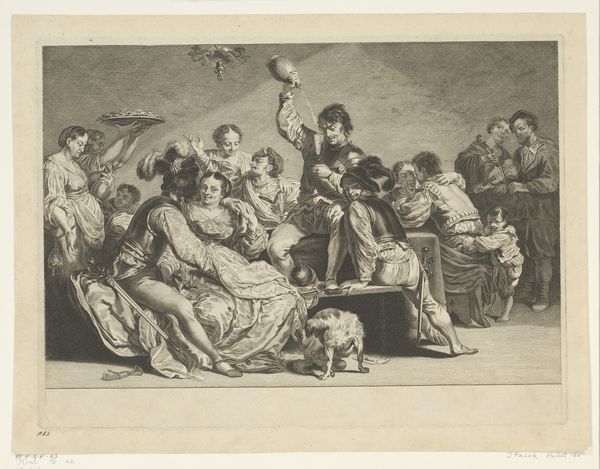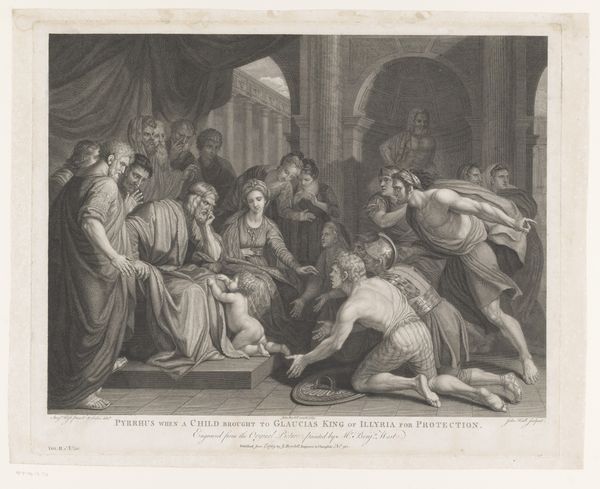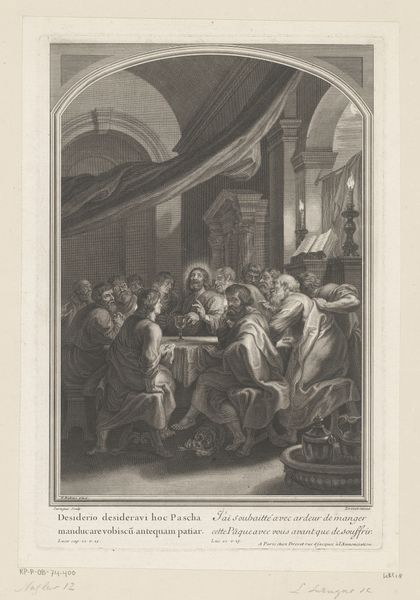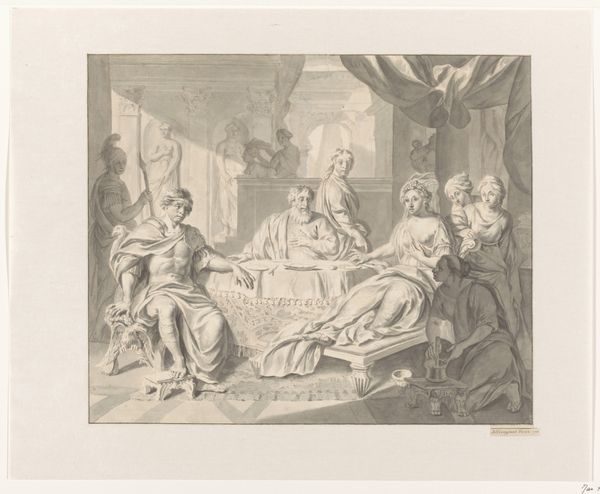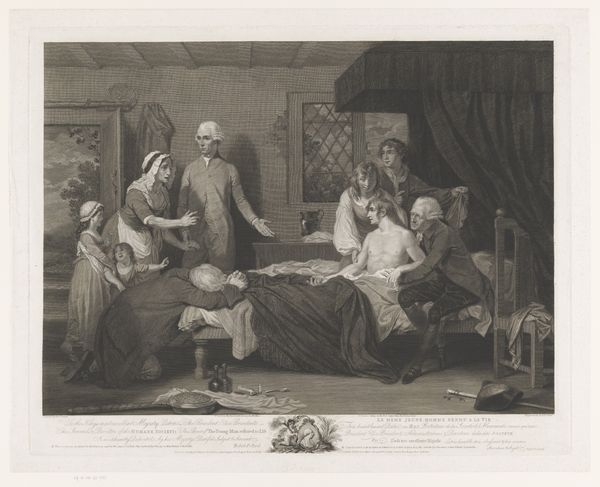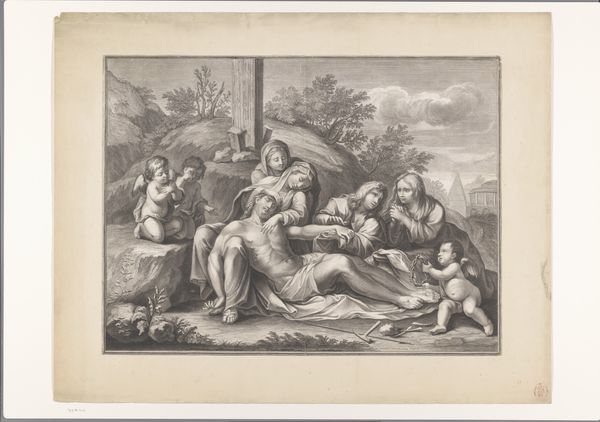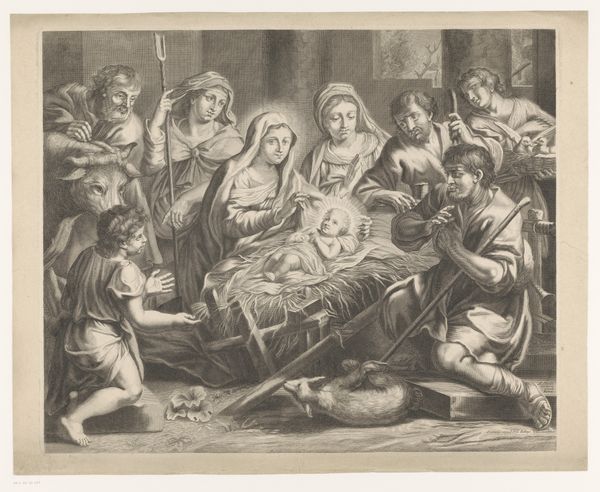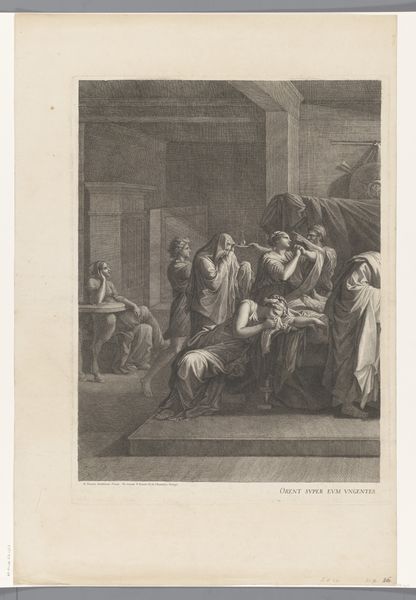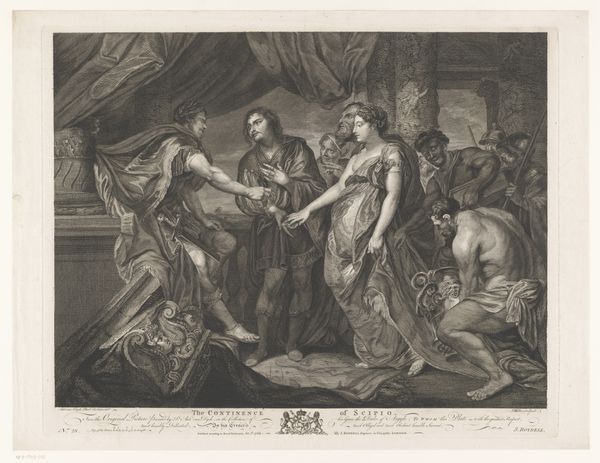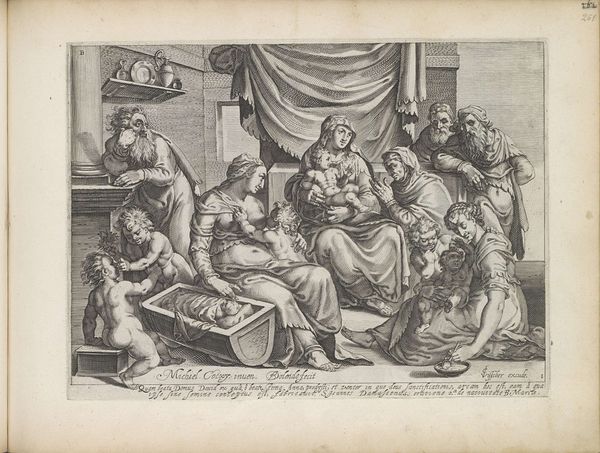
engraving
#
narrative-art
#
baroque
#
figuration
#
history-painting
#
engraving
Dimensions: height 403 mm, width 549 mm
Copyright: Rijks Museum: Open Domain
Editor: So, this is *Maria Magdalena wast de voeten van Christus*, or Mary Magdalene Washing Christ’s Feet. It's an engraving dating from around 1648-1670. The detail is incredible! What jumps out at you? Curator: It’s compelling how Ragot uses this common story as a nexus point, focusing not just on the act itself but on the potent emotional exchange and underlying cultural codes. Editor: Cultural codes? What do you mean? Curator: Note how Mary Magdalene's gesture— washing Christ’s feet — immediately signifies humility, repentance. But it’s also deeply sensual; consider the erotic power historically projected onto the scene. This becomes a signifier laden with societal judgment, redemption, and transformed identity. Is that something you notice in the image? Editor: I do now. I hadn't really considered that aspect. The faces in the background seem to disapprove…almost disgust. Curator: Precisely. The onlookers are vital. Their expressions broadcast complex interpretations, which shape, control, and sometimes stifle Magdalene's narrative over centuries. How much freedom, truly, does such publicly displayed repentance allow? Editor: That's really thought-provoking. Seeing those tensions visualized gives the image a completely new meaning. I see layers I never noticed. Curator: Indeed. What appeared to be a simple religious narrative holds intricate echoes about social constraint, personal evolution, and the very nature of societal judgement over time. Editor: This really underscores how visual stories create and perpetuate lasting cultural ideas.
Comments
No comments
Be the first to comment and join the conversation on the ultimate creative platform.
